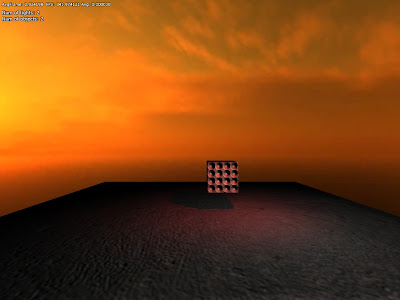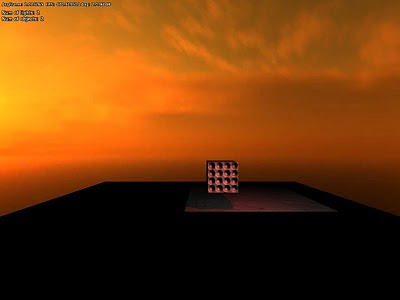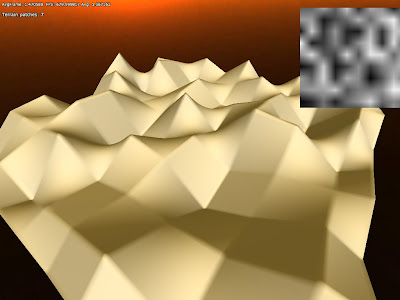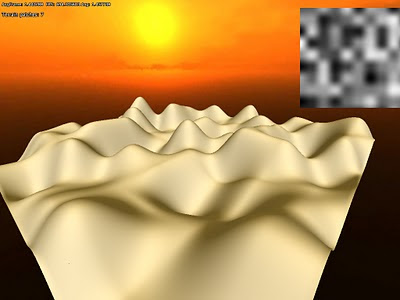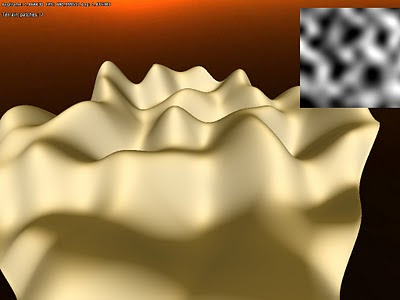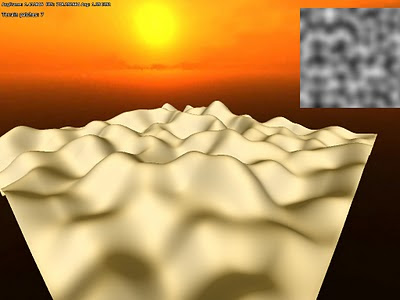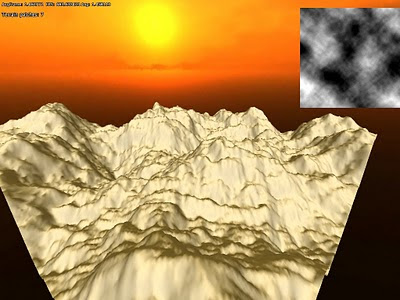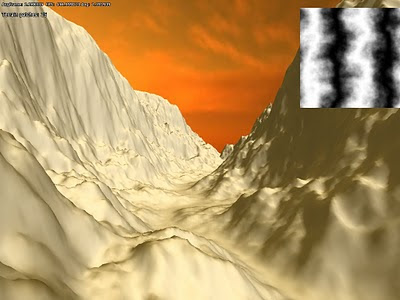IntroductionIn
Amnesia one of the main goals was for the player to become the protagonist. We wanted the player to think "I am" instead of "Daniel is" and in that way make it a very personal experience. The main motivation for this was of course to make the game scary, but also for the memories that were revealed to feel more personal for the player.
In this post I will go through some of the design thinking we used, problems it caused and how it eventually turned out. I will also briefly discuss the future of this sort of design.
Playing a roleFirst of all, it is not required that the protagonist matches the player character in order for the player to "become" him/her. As an extreme example, I see no problem with a game featuring an animal as lead character to have the player become the protagonist. The idea is not that the player should match the physical / mental protagonist, but rather that he/she should be able to roleplay him/her and to feel like really being him/her.
There is of course limits to this kind of roleplaying and certain characteristics might make it impossible for a player to feel a connection. This is the same for works in other media where the reader/viewer is meant to feel empathy toward one or more characters. Sometimes there is some mismatch that removes this feeling, and much of the work's power is lost. Note that this sort of friction is more likely to happen because of the personality of the character and not so much because the physical appearance. A simple example of this would be that protagonists in Disney movies are often very easy to relate to despite being animals.
Considering this, the general rule that we used was not to force emotions and actions that players were unlikely to accept. When the protagonist is displayed as doing or feeling something, we had to make sure that player could agree to this.
Getting into the actIn film or literature it is possible for the audience to not like the protagonist at the start, but then make them feel a connection over the course of the work. This is not possible to do in a videogame, as players must start acting out their role as soon as the game starts. If the situation does not feel comfortable at the start, then it will be very hard to connect.
Because of this, videogames need to have a tutorial of some sort where the player gets used to the idea of playing a certain character. During this phase it is also important that the player learns how to act as the protagonist, so they later act accordingly. I do not think this can be done solely on a mechanics basis, as the trial and error involved will most likely just frustrate. This is largely dependent on the space of actions available though and sometimes players will quickly realize the role they are meant to play.
In Amnesia we made the choice to be very upfront on what is expected by the player. This is accomplished by displaying messages before the game starts, telling the player what to do. The main message was a rather simple one, simply saying that the player should not try and fight any monsters. As this is pretty close to what most people would do in real-life, we basically just had to tell players that the game was not a first-person-shooter and the rest came naturally. If the game would have required more specific behavior from the player, more info might have been needed.
Once the player accepts this role and is ready to play, the next step is to provide an interface between the player and world. Here a bunch of problems arises and it becomes less clear what is the right thing to do.
What emotions to hide? First of all, we decided to remove any form of cut-scene from the game. Upon entering a cut-scene, there is a large distinction between the kind of control a player has during normal play, creating a discrepancy that weakens the player-protagonist connection. In our previous effort, Penumbra, we had little of these, but there were still places when control was taken from the player for longer periods. In Amnesia, we only used very short "view hijacks" to display points of interest. These were not very frequent and were meant to be seen as reflexes, which seemed to be accepted for most players. Some were a bit annoyed by them though and we are not sure they were that necessary.
Next thing we decided on was that, unlike Penumbra, Daniel (the protagonist) should never comment on the situation. In Penumbra the most obvious place this happens is when a spider is spotted and the text "A spider! I do not like spiders" appear. This sort of interface where the protagonist make subjective remarks on the game world can very easily break the connection between player-and-protagonist.
We tried to skip descriptive texts completely, but this caused problems when dealing with puzzles. If players start thinking about a puzzle "incorrectly", then it is imperative that they get on the right track. In these cases, the easiest (and many times only) way to communicate this to the player is by using texts. We tried to add as many solutions to avoid having texts, but it only works so far, and eventually some kind of explanatory / hinting text was needed. If not the player would have gotten stuck instead and we thought this would be worse than having the texts. In order to keep the player-protagonist connection, we kept all of this texts very objective and impersonal, careful to not force emotions on the player.
Side note: A problem we had when removing subjective comments was the hints were much harder to write. Not being able to let the protagonist guess, use insights or personal knowledge proved quite tricky at times.
We did not remove all of the subjective protagonist emotions though. We kept the more autonomous physical actions such as panting and heart beats, a choice that proved slightly controversial. After releasing the
teaser video some people argued that having these sort of reactions pulled them out of the experience. Others felt that it just heightened the experience. Once the game was released, the main complaint came at a very specific feature, namely the "sanity damage"-reaction (that happens whenever the player witnesses something frightening). In the end, we estimate that something like 15-30% of the players disliked these kind of effects.
For the people that did not dislike these effects, many felt it increased the connection to the protagonist. For example feeling as if their own heart beat faster when the protagonist's did or becoming startled when a "sanity damage"-effect told them to. This is a really interesting subject and while using these kind of effects might detract the experience for some, I think it might be worth taking the risk. So far we have mostly tried this for very simple situations, but I believe it can used to evoke much more complex emotions.
Bringing back memoriesAn important part of Amnesia is that players slowly learn the background of the character they are playing. As the name suggest, the game starts out with the protagonist having amnesia that sets the player and protagonist on equal footing. By progressing through the game both the player and the protagonist gain access to increasingly more lost memories, slowly getting an idea of how Daniel ended up in the situation he currently is in.
The main mechanic we used to deliver these lost memories was through diary entries scattered throughout the game. We decided to voice these in order for them to be more interesting, but I think this backfired a bit. What many players seem to have experienced was that Daniel was reading the entries aloud. Thus this proved to be a large distraction and must have weakened the player-protagonist bond for many. What we intended was for the player to hear Daniel's voice as the voice of their old self. This was probably way too obscure though and it might have been better to just had them as pure text.
Added to this was the fact that Daniel actually spoke at some points. Some lines are spoken during the start of the game and some during gameplay if sanity is too low. Again, this was intended to be lost memories, but many players did not perceive it as such and instead thought it was strange to hear Daniel talking.
As mentioned earlier, we wanted the player to feel as if the lost memories were their own. But because of the way the memory content was delivered I think the effect was not what it could have been.
DialogA major obstacle when trying to create strong a player-protagonist connection is that one often end up with the so called "silent protagonist". The reason for this is simply that that whenever spoken words are required, the lines spoken by the protagonist must be predetermined and chosen for the player. Either, the character simply speaks a scripted line or the player chooses from a list canned responses. Using the first type allows for more fluent conversation but removes any interaction. The second choice provides some interaction but makes conversations stiff (as other actions are only possible when in "dialog mode") and might lack options the player finds appropriate to say. Some hybrid solutions exist (like in
Blade Runner where the player just sets an attitude) but the problem still remains.
Side note: Interestingly, the problem is quite opposite in Interactive Fiction. Instead of lacking options for the player, the characters one speaks to lack the intelligence to understand all possible (and fitting) sentences.
So how to solve this? Well, first of all it is worth noting that the systems mentioned above can still be used if applied carefully. If the player's emotions are in line with the protagonist's then simply having short scripted lines could work very fine. To make this work I also think it is important that the protagonist's voice is a recurring element of the game to get the player used to it. If it just pops up on rare occasions, the illusion is easily broken.
Call of Cthulhu and the
Thief series use this to some success (I think it is at its best when short, in-game and the player is free to do other actions at the same time).
The multiple choice system is also possible to use, but I think it comes with more problems. The biggest is that since the player gets a choice it is more obvious when the game does supply the wanted action. With other actions such as walking and fighting, it is easier to set up rules for the player on what is allowed and not. Conversations have a much wider scope and it is much harder to keep it consistent. It is also much harder to display the options in a way that feels okay. Unless they entire game is controlled with a menu-like system, having a menu pop up for a specific action is very distracting.
In Amnesia we chose to avoid conversations as much as possible and there are only two occasions when you meet another character face-to-face. And in only one of these were there any real opportunity for a conversation (with a tortured man called Agrippa). The way we went about it was for Daniel to be silent, but for Agrippa to respond as if Daniel had spoken. This gave the dialogs (or rather monologue) more flow but many players found this quite disconnecting. They found it strange that Daniel silently spoke back, especially as many was sure they had heard him speak before when reading diaries. On the other hand, it might have been even more strange if Agrippa had never asked Daniel anything and simply just spoken in direct orders or in a lecturing manner. Agrippa was put into game pretty late in development and we did not gave it as much thought as we should have, so this might have been solved better.
When creating a videogame with a strong player-protagonist connection, the best option is probably to fit the game world around a protagonist that does not require none or very simple (as in yes-no or simple vocabulary) speech. This way, the player-protagonist connections is more easily kept and consistency is maintained. An example of this is
System shock where all characters are dead or talking through a one-way radio. Another example is
BioShock 2 where the protagonist is a dumb robot that is not expected to speak. This of course put limits on what kind of experiences that can be made, but might be the only way to create a strong player-protagonist experience.
Problems to overcomeIt is not only dialog that is a large problem when trying to make player and protagonist one and the same. Since we are trying to craft an experience where the players themselves are a central ingredient, much pressure is put on them.
A major problem is that it is hard to let the protagonist have any special knowledge. This is a reason why stories starring amnesiacs, outsiders or cannon-fodder are so common; things becomes very complicated if players need to have a deeper understanding of their surroundings. A way to solve this is to force the player into learning things before starting the game. But since reading a novel before starting the game is not really possible, the amount of information that can be given is quite limited. Another way to solve this is to have some sort of tutorial texts popping up, but this is of course very distracting.
Another issue, is that the player and protagonist might not share the same goals. For instance the protagonist might be out for revenge, but the player might not be interested in this. This makes games of this type end up with fairly simplistic motivations. It might be possible to give some kind of instructions before the game starts, but that does not seem very good to me. Better would be to provide an experience at start that sets up the player's mood to match the protagonist's. This is easier said than done though.
Why bother?So why go into all of this trouble of making blurring the line between player and protagonist? For one thing, I think it is something that is extremely interesting to explore. So far games that try to create strong player-protagonist bonds are mostly about killings things and exploration into other themes is pretty much uncharted.
Secondly, it is something that that is unique to the medium. In no other media can the audience step into works of art themselves. And just because of this I think it demands to be experimented with. Instead of looking too much to film or other art as inspiration, we should try and do things in ways that only videogames can.
Your thoughts?We would be very interested in hearing your thoughts on this. How did you feel like you connected with the protagonist in Amnesia? Was there any especially large obstacles for you to have a strong connection?
Also, in case you are interested in more discussions on this, check out the previous post on self-location in games:
http://frictionalgames.blogspot.com/2010/09/where-is-your-self-in-game.html

